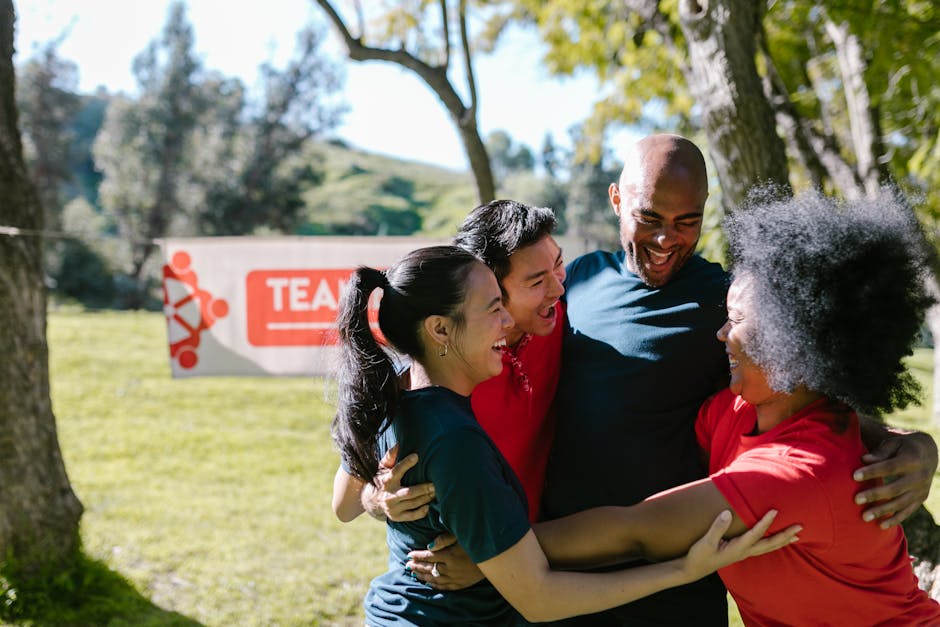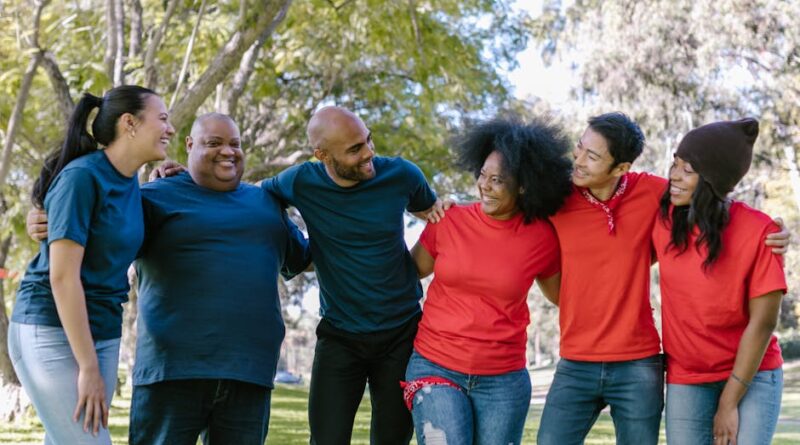Building Diverse Teams for NGOs: Fostering Inclusivity and Innovation
Welcome to the world of non-governmental organizations (NGOs), where passionate individuals come together to make a positive impact on society. In this dynamic and ever-evolving sector, the importance of building diverse teams cannot be overstated. From addressing complex social issues to driving meaningful change, diverse teams play a crucial role in shaping the future of NGOs. But what exactly does it mean to build diverse teams for NGOs, and why is it so essential?
In this comprehensive guide, we will delve into the intricacies of building diverse teams for NGOs, exploring the benefits, challenges, and best practices associated with creating inclusive work environments. Join us on a journey to discover how diversity can drive innovation, foster creativity, and ultimately drive greater impact in the world of NGOs.
The Power of Diversity in NGOs

Diversity in NGOs goes beyond just representation; it encompasses a wide range of perspectives, experiences, and backgrounds that enrich the organizational culture and enhance decision-making processes. When individuals from diverse backgrounds come together, they bring unique insights, ideas, and solutions to the table, leading to more innovative approaches to complex problems.
For NGOs, diversity is not just a buzzword it is a strategic imperative. By embracing diversity and fostering an inclusive work environment, NGOs can better connect with the communities they serve, build stronger partnerships, and increase their overall effectiveness. Moreover, diverse teams are better equipped to navigate the challenges of a rapidly changing world, where inclusivity and adaptability are key to success.
The Benefits of Diversity in NGOs

1. Increased Creativity and Innovation: Diverse teams are more likely to think outside the box, challenge the status quo, and come up with innovative solutions to pressing issues. By bringing together individuals with different perspectives and skill sets, NGOs can foster a culture of creativity that drives meaningful change.
2. Enhanced Decision-Making: When diverse voices are included in the decision-making process, organizations can make more informed and well-rounded decisions. By considering a variety of viewpoints, NGOs can avoid groupthink and make choices that are more reflective of the diverse communities they serve.
3. Improved Problem-Solving: Diversity enables teams to approach problems from multiple angles, leading to more comprehensive and effective solutions. By tapping into the collective wisdom of a diverse team, NGOs can address complex challenges with greater agility and creativity.
4. Better Community Engagement: When NGOs reflect the diversity of the communities they serve, they are better able to build trust, foster relationships, and engage with stakeholders in a meaningful way. By prioritizing inclusivity, NGOs can create a more welcoming and supportive environment for all individuals.
Challenges of Building Diverse Teams in NGOs

While the benefits of diversity in NGOs are clear, building and maintaining diverse teams comes with its own set of challenges. From overcoming unconscious biases to addressing systemic barriers, NGOs must be proactive in creating inclusive environments where all individuals can thrive.
1. Unconscious Bias: Unconscious bias can manifest in various forms, from hiring decisions to team dynamics. To combat bias, NGOs must implement diversity training, promote self-awareness among staff, and create a culture of accountability and transparency.
2. Lack of Representation: In some cases, marginalized groups may be underrepresented in NGOs, leading to a lack of diversity at all levels of the organization. To address this issue, NGOs must prioritize recruitment, retention, and promotion strategies that actively promote diversity and inclusion.
3. Limited Resources: Building diverse teams requires time, effort, and resources, which can be challenging for NGOs operating on limited budgets. To overcome this obstacle, organizations can leverage partnerships, seek funding opportunities, and prioritize diversity in their strategic planning.
4. Resistance to Change: Embracing diversity often requires a cultural shift within organizations, which can be met with resistance from staff members who are resistant to change. NGOs must address this resistance head-on by promoting open dialogue, providing training and support, and leading by example.
Best Practices for Building Diverse Teams in NGOs

1. Develop a Diversity and Inclusion Strategy: Create a formal diversity and inclusion strategy that outlines your organization’s commitment to building diverse teams. Set clear goals, establish metrics for success, and communicate your diversity initiatives to all stakeholders.
2. Prioritize Recruitment and Retention: Implement recruitment practices that prioritize diversity, equity, and inclusion. Consider implementing blind recruitment processes, conducting diversity training for hiring managers, and establishing mentorship programs for underrepresented groups.
3. Foster Inclusive Leadership: Cultivate a culture of inclusive leadership within your organization by providing training, support, and resources for leaders at all levels. Encourage leaders to lead by example, promote diversity and inclusion in their decision-making, and hold themselves accountable for creating inclusive work environments.
4. Celebrate Diversity: Recognize and celebrate the diverse backgrounds, experiences, and contributions of your team members. Create opportunities for staff to share their stories, participate in cultural celebrations, and engage in dialogue around diversity and inclusion.
5. Provide Ongoing Training and Support: Offer ongoing training and support for staff members on topics related to diversity, equity, and inclusion. Provide resources, workshops, and learning opportunities that promote awareness, empathy, and understanding among team members.
Expert Opinions
We spoke with Dr. Sarah Smith, a leading expert in diversity and inclusion in the nonprofit sector, to get her perspective on the importance of building diverse teams in NGOs. According to Dr. Smith, “Diversity is not just a moral imperative it is a strategic advantage. Organizations that prioritize diversity and inclusion are better equipped to meet the complex challenges of our world and drive meaningful change.” Dr. Smith emphasizes the need for NGOs to invest in diversity initiatives, promote inclusive leadership, and create a culture of belonging for all individuals.
Conclusion
To wrap things up, building diverse teams for NGOs is not just a trend it is a necessity in today’s rapidly changing world. By embracing diversity, fostering inclusivity, and promoting equity, NGOs can drive innovation, enhance decision-making, and ultimately create a more impactful and sustainable future. As we look ahead to the challenges and opportunities that lie ahead, let us remember that diversity is not just a goal to strive for it is a journey to embark on together.




